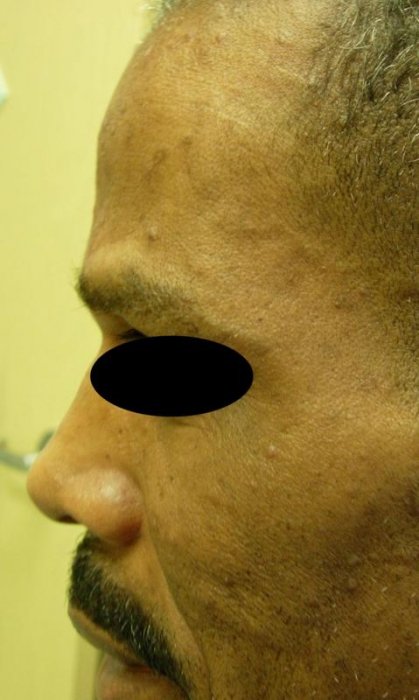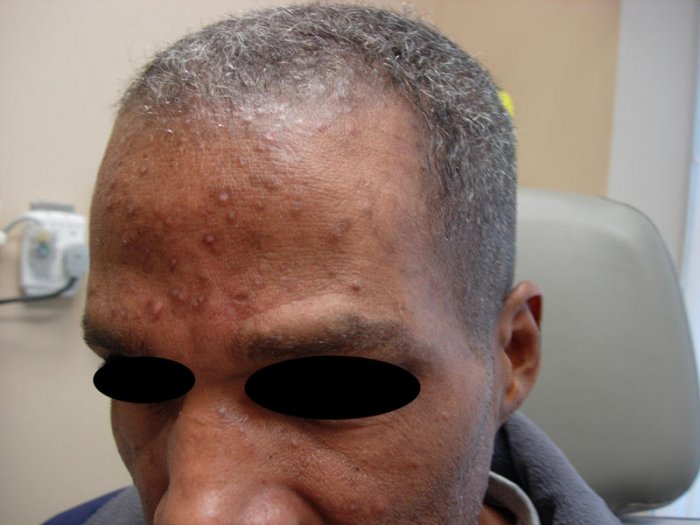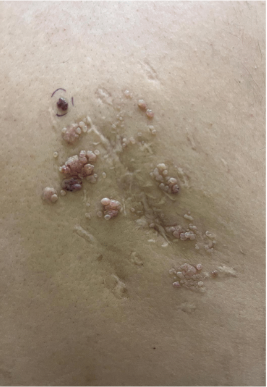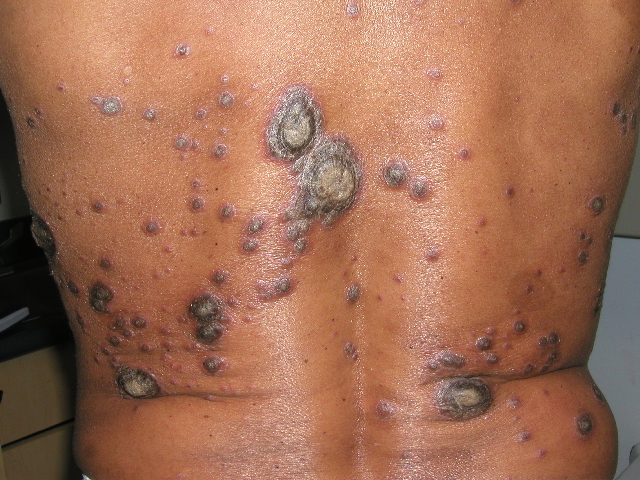Presenter: Chris Buatti D.O.
Dermatology Program: Genesys Regional Medical Center
Program Director: Kimball Silverton D.O.
Submitted on: June 16, 2010
CHIEF COMPLAINT: new-onset acne-like lesions on his face
CLINICAL HISTORY: A 48-year-old African American male presented with new-onset acne-like lesions on his face. These erythematous painful papules started two months prior, and the patient complained primarily of pruritis. He was recently diagnosed with HIV after being hospitalized for pneumonia last June. His PCP started him on antiretrovirals, and Bactrim. He also denied constitutional symptoms such as fever, chills, weight loss, myalgias, or arthralgia. No prior treatments.
PHYSICAL EXAM:
1-5 mm painful, pruritic papules of the cheek, forehead, and neck. Some excoriated follicular papules present. Oral mucosa, hair, and nails were not affected. There was no cervical, axillary, or inguinal adenopathy.



LABORATORY TESTS:
A shave biopsy was obtained from one of the lesions and sent for histological analysis. The patient CBC, ANA, CD4, CD8, and TSH levels were drawn. His absolute CD4 count was 67 cells/mm3, well below the threshold of 200 cells/mm3 usually seen in patients with EPF (4), and he was anemic with a hemoglobin level of 9.8. All other labs were within normal limits.
DERMATOHISTOPATHOLOGY:
A biopsy was taken from his left forehead with a differential of EPF versus granuloma rosacea. The pathology report came back showing abundant eosinophils and superficial granulomatous infiltrate. The diagnoses of sarcoid and granulomatous rosacea were entertained, but neither of these disease processes presents with eosinophils. EPF findings are usually identified after serial biopsies are performed with careful analysis of every hair follicle (5).
Histological, an infiltrate of mononuclear cells and eosinophils are seen around the upper portion of the hair follicle at the level of the sebaceous gland. As lesions evolve, eosinophils and lymphocytes enter the follicular structure and the sebaceous glands.
The diagnosis of EPF is extremely difficult to make and frequently becomes clear after the diagnosis of HIV is finally made.
DIFFERENTIAL DIAGNOSIS:
1. Acne Vulgaris
2. Rosacea
3. Drug Reaction
4. Pityrosporum Folliculitis
5. Eosinophilic (pustular) Folliculits




